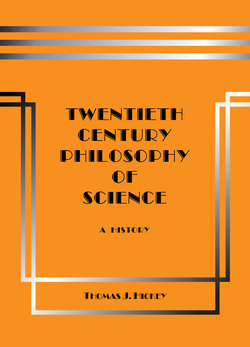Читать книгу Twentieth-Century Philosophy of Science: A History (Third Edition) - Thomas J. Hickey - Страница 123
На сайте Литреса книга снята с продажи.
Comment and Conclusion
ОглавлениеThis chapter examined two variations on positivism formulated by two turn-of-the-twentieth-century physicists, and previewed the story of positivism’s rejection by the physicists who made the two great scientific revolutions in twentieth-century physics. This latter story will be given in greater detail below in the BOOK describing Heisenberg’s philosophy of quantum theory. But to appreciate these developments more adequately, it is helpful firstly to have examined the development of the pragmatist philosophy of language.
The next BOOK describes Carnap’s transformation of Mach’s positivism for his philosophy of semantical systems and then Quine’s transformation of Duhem’s positivist philosophy of mathematical physics into the contemporary pragmatism. Carnap and Quine were friends well known to one another, and both contributed insightfully to the linguistic-analysis tradition in philosophy. But Quine criticized Carnap’s positivism, and elaborated Duhem’s philosophy of mathematical physics beyond Carnap’s positivism into a new generalized philosophy of language now known as the Duhem-Quine thesis in contemporary pragmatism.
